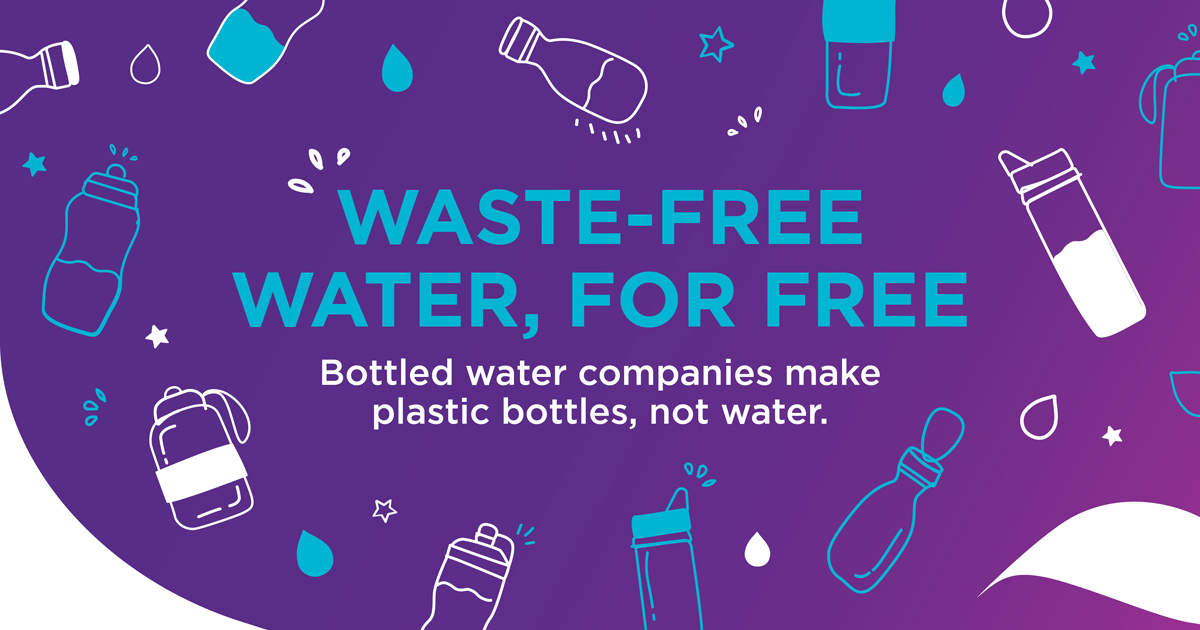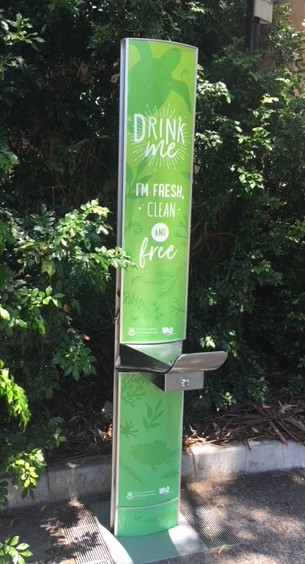
 Did you know that every year Australians spend an average of $580 per person on bottled water! We have the second highest bottled water consumption rate in the world, according to a United Nations report.
Did you know that every year Australians spend an average of $580 per person on bottled water! We have the second highest bottled water consumption rate in the world, according to a United Nations report.
What's more, it takes several litres of water - and many other resources - to produce a 1L bottle of drinking water. The plastic from the bottle takes hundreds of years to break down and the volume of plastic waste is increasing.
BYO bottle on campus
At UQ, we want to make it easy for people to say 'no' to bottled water and single-use plastic.
Water refill stations have been installed around the Univeristy, so you can bring your re-usable bottle every time you come on campus.
We're proud of our "Drink Me" hydration stations.
Enjoy free fresh water refills for your water bottle while looking after your health and the environment.
